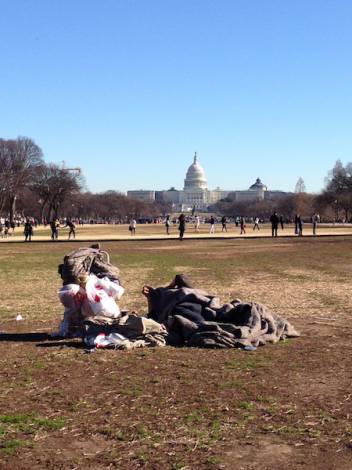U.S.A. In April 2013, the National Alliance to End Homelessness published its annual State of Homelessness in America 2013 report, which shows that overall, the homeless population in decreased by less than 1 percent from 2011 to 2012.
Looking at a larger time span from 2005 to 2012, the number has dropped an entire 17%, equivalent to 129,000 fewer Americans who were still homeless in 2005.
However, despite policy measures such as increased federal investment permanent supportive housing and flexible federal resources made available to communities through the Homelessness Prevention and Rapid Re-housing Program (HPRP), homelessness continues to be an issue.
Washington D.C. in particular has witnessed a 6% increase in homelessness. While chronic homelessness is being combatted and has decreased by 11% from 2011 to 2012, family homelessness in D.C. has increased by 19%.

Change in homelessness by state, 2011-2012. | Source: The State of Homelessness in America 2013 report by the National Alliance to End Homelessness.
A recent article in the Post Local speaks specifically to teen homelessness, a so-called “invisible population.”
But when the government is too busy cleaning up its own accounts, who is going to pay attention to those who sleep outside the banks?


